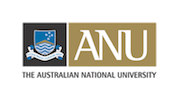

“Two monuments of the ancient civilization of the Australians have been
preserved, amid the desolations of many generations; in the highly
elaborate and symmetrical structure of their language, and the
comprehensive social nomenclature on which their rules of marriage and
descent are based.”
—William Ridley, 1861.
For many thousands of years, Indigenous Australians have been linked by
complex family-like networks stretching across the continent – from the
rainforests and coastal environments, to the arid interior and tropical
north. These sparse and widely scattered populations are also highly
diverse, comprising roughly 250 separate language groups. But
despite the challenges of distance and cultural-linguistic difference,
Australia's Indigenous communities are organised on an epic scale in a
vast mesh of interconnected kinship systems.
From the 1860s scholars and missionaries began to recognise that
Indigenous Australians had unique ways of talking about social
relationships. Moreover, the enormous scale and complexity of
Australian social organisation presented a challenge to the
nineteenth-century view that indigenous people were mere 'primitives'.
Since that important turning point, committed scholars — both settlers
and indigenous people — have documented the unique kin terminologies,
as they appear in Australia's many indigenous languages. This process
of careful documentation continues today. Although many languages have
been tragically lost as a consequence of colonisation, traditional
social organisation has proved remarkably resilient, resisting or
adapting to new circumstances.
Funded by the Australian
Research Council, the AustKin project is gathering Aboriginal
kinship terms together in one place in order to gain a clearer
contintent-wide view of social organisation in Australia. In the first
phase of the project, team-members assembled an unparalleled database
of words for family members—'mother', 'mother's brother',
'father's sister' son', 'mother's brother's daughter' etc—across
hundreds of languages. For the second phase, a separate database is
being developed to record social categories — commonly known as 'skins'
— that divide the Indigenous social universe into two, four or eight
groupings. Skins provide a shortcut for calculating the appropriate
relationship between two individuals who meet for the first time and
who need to know what pre-assigned 'family' role to occupy.
Using empirical methods from linguistics and anthropology, terms
collected in both phases of the project have been systematically
analysed and compared. As a result of this careful work, we now
have new models of past migrations, land connections and cultural
change, providing fresh insight into how Aboriginal people have
organised social interaction and created enduring societies. A full
list of research outputs from the AustKin project can be found here.